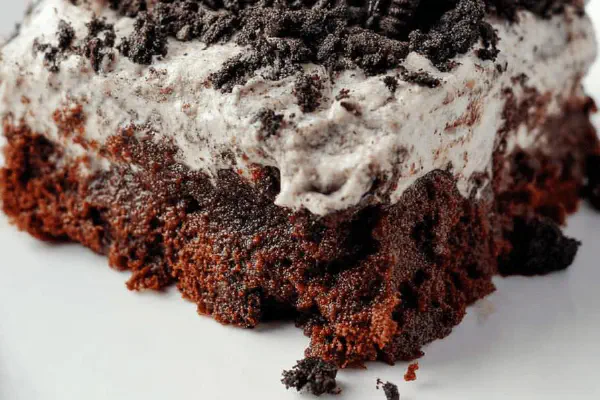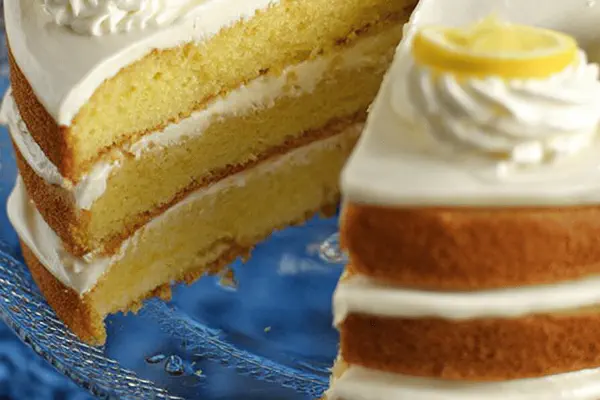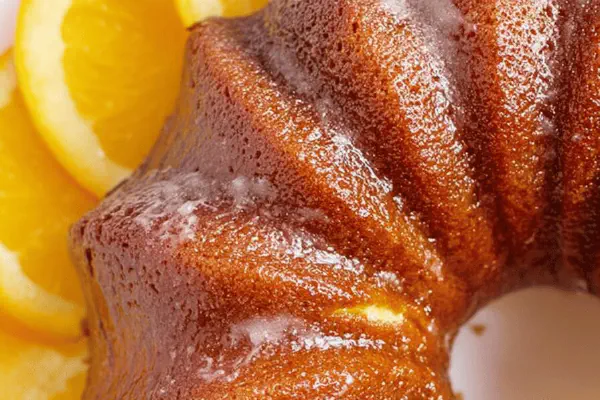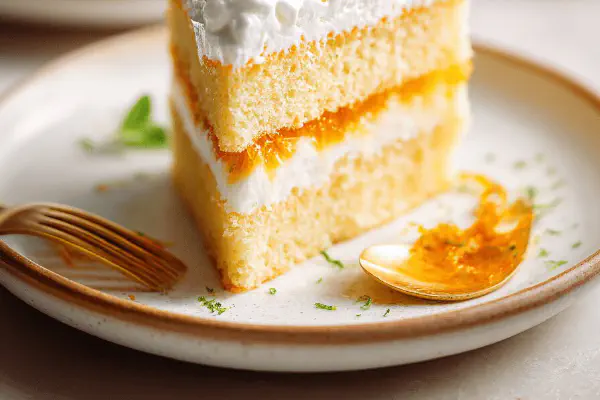Featured Recipe
Citrus Poke Cream Cake
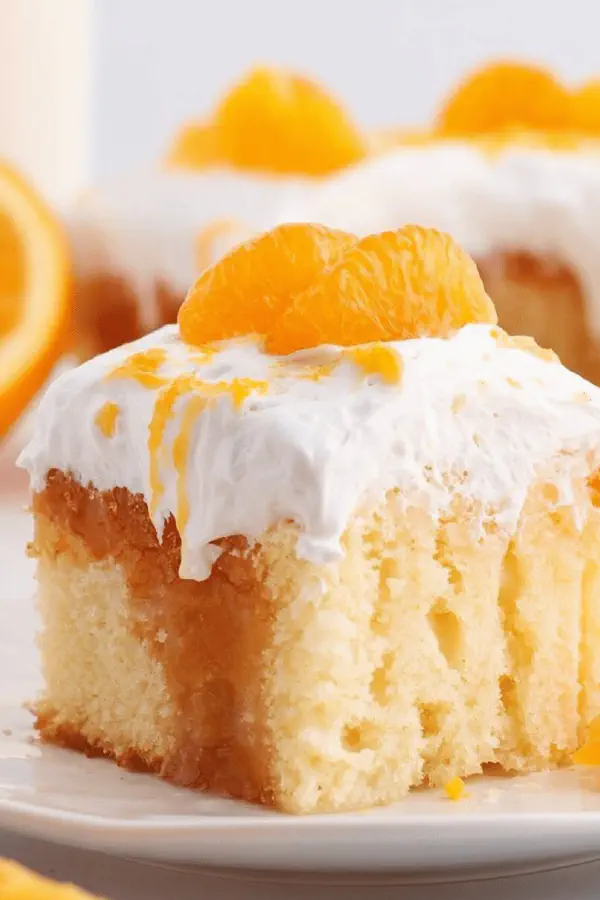
By Kate
"
White cake base, gelatin filling, creamy pudding topping with a citrus twist. Chilling is key to set layers and develop texture. Mandarin segments scattered on top, dollops of whipped cream finish. Orange gelatin replaced with lemon-lime for brighter acid balance. Vanilla pudding swapped with cream cheese mix for tang and richness. Chilling times adjusted for thorough setting without overdoing it. Poking cake deeply, but not through. Folding whipped topping carefully to avoid collapse. Fresh citrus notes meld with creamy textures. Method focuses on layering flavors and textures. Small tweaks to ingredients elevate classic poke cake approach.
"
Prep:
15 min
Cook:
28 min
Total:
Serves:
15 servings
cake
citrus
pudding
dessert
gelatin
Introduction
Ever wrestled with poke cake that turns into a soggy mess? Cooling the cake fully before poking matters. Hot cake dumps gelatin everywhere, ruins texture. Poke with measured spacing, about an inch apart, to maximize juicy pockets without structural collapse. Switching orange gelatin to lemon-lime adds brightness, cuts sweetness. Cream cheese pudding instead of vanilla injects tang and body. Folding whipped topping keeps air, no dense glop. Mandarin segments scattered, enclosed in a creamy cloud; final topping of piped whipped cream dollops with citrus wedge finishes sharp. Chill times tweaked slightly; atmosphere of the kitchen humid or dry affects gelatin setting times. Keep watch, feel firmness gently. Follow sensory cues: cake should spring back, gelatin should jiggle but not slosh, pudding layer stable but creamy. This’s not just a poke cake. It’s a study in layering flavors, managing moisture, and texture harmony. The crunch of the skewer, the glossy fill sheen, the bright citrus pop. It’s more than dessert; it’s precision in the kitchen.
Ingredients
About the ingredients
White cake mix is the base here; if skipping boxed, use your favorite scratch white cake batter with neutral flavor. Lemon-lime gelatin can be swapped back to orange if citrus profile disliked; note sweetness levels differ. Instant cream cheese pudding mix is a great way to add complexity; can substitute vanilla pudding plus 4 oz softened cream cheese whipped smooth. Whipped topping split into two portions for folding and decoration to maintain loft. Mandarin oranges must be well drained to avoid watering down cake—use paper towels if needed. Fresh lemon zest on top adds zest and aroma; skip if you want simpler flavor but consider zesting just before serving for best aroma. Efficient chilling depends on accurate fridge temperature. If no piping bag, a sturdy ziplock with tiny corner cut is a good hack for dollops. Always taste and adjust sugar in pudding mix if making from scratch. Skip whole milk for 2% if richer texture preferred but thinner consistency may result.
Method
Technique Tips
After baking, cake must be completely cooled or gelatin won’t absorb and will leak. Poke holes deliberately; too shallow won’t hold jelly well, too deep could cause bottom leakage. Dissolving gelatin completely is hallmark; grainy gelatin ruins texture. Work fast after mixing gelatin—once it cools, it thickens and becomes hard to pour. Pour gelatin over holes carefully not to flood cake. Feel cake gently while chilling—firm gelatin feels slightly springy, pudding should thicken to spreadable, not runny. Whisk pudding and milk about a minute to activate thickening but don’t overbeat or mixture becomes overly stiff; folding in whipped topping gently preserves airiness and ensures good mouthfeel. Arranging mandarin sections evenly prevents clumping and watery spots. Final chill lets layers meld and firm up, do not rush serving or topping will collapse. Piping whipped topping dollops must be even to look uniform; don’t pipe directly on pudding layer but on lowest layer after pudding layer settles. Serrated knife slices best, gentle sawing motion required to keep shapes intact. Store cake covered to avoid fridge odors and drying. If leftovers, bring to room temp for 10-15 minutes before serving for better flavor release.
Chef's Notes
- 💡 Letting cake cool completely is key. Warm cake absorbs too much liquid; results in excess sogginess. Cool on wire rack. 30-60 mins minimum.
- 💡 Poking holes requires careful spacing. About 1 inch apart. Too close and structure collapses. Too far, filling won’t reach. Use bamboo skewer.
- 💡 Work quickly with gelatin. After dissolving in boiling water, mix vigorously. Otherwise, it’ll thicken too much; hard to pour. Aim for clear no grit.
- 💡 Incorporating whipped topping into pudding needs care. Fold gently. Don’t beat. Airiness matters for texture. A heavy hand ruins lightness.
- 💡 Using serrated knife is essential for clean slices. Gentle sawing motion helps maintain layers. Careful to avoid top collapsing.
Kitchen Wisdom
How do I prevent soggy cake?
Cool cake before adding gelatin. Warm leads to leaks. Watch for well-defined holes post-gelatin.
Can I replace cream cheese pudding?
Yes, substitute vanilla with 4 oz softened cream cheese. Adds tang. Adjust thickness carefully.
My gelatin won’t set properly?
Ensure measurements accurate. If too warm or humid, gelatin can struggle. Chill longer if needed.
How to store leftovers?
Cover tightly in fridge. For best texture, let sit at room temperature 10-15 mins before serving again.
